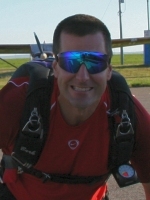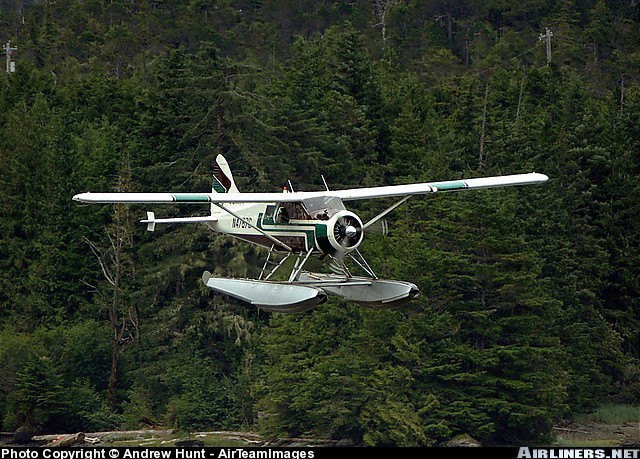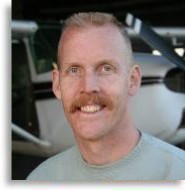Recommended Posts
riggerrob 644
"... At replacement time is one always condemned because of too much work where as the other can be reconditioned and good to go again? ..."
.............................................................................................
That depends whether the old propeller can be re-conditioned or whether it needs to be replaced (big bucks).
Few DZOs consider replacing propellers until they are faced with a CAN$15,000 overhaul.
Then they might consider spending $20,000 on a fancier, faster-climbing propeller.
.............................................................................................
That depends whether the old propeller can be re-conditioned or whether it needs to be replaced (big bucks).
Few DZOs consider replacing propellers until they are faced with a CAN$15,000 overhaul.
Then they might consider spending $20,000 on a fancier, faster-climbing propeller.
Hey Dave...
My 182 isn't really a fair comparison. I changed too many things to give you a real a/b comparison between 2-blade and 3-blade. My 3-blade prop was a project in itself - I have a field approval for an 86" C401 3-blade McCauley. That is basically a 3-blade seaplane prop (6" longer than a normal C-401) that requires me to have a heavy duty nose fork (Landes kit) and 6.00 x 6 nose tire (normal is 5.00 x 5) to assure ground clearance in the event of flat tires/flat nose strut.
I also have a Pponk 0-520 engine with high compression pistons (close to 300 hp). The engine can turn up to 2750 rpm, so the noise generated with the big prop can be really high. I need to dial the RPM back right after take off to keep the neighbors from having issues.
Along with XTOL wing extensions (2950 lb gross) and a Sportsman STOL leading edge cuff, it's a pretty fun airplane to fly. Doesn't require much runway for takeoff or landing. Times to altitude are 10 - 13 min depending on load size.
Cruise is at the top of the green arc. I think it's a great set-up, but the noise could be a real issue for some.
Randy
My 182 isn't really a fair comparison. I changed too many things to give you a real a/b comparison between 2-blade and 3-blade. My 3-blade prop was a project in itself - I have a field approval for an 86" C401 3-blade McCauley. That is basically a 3-blade seaplane prop (6" longer than a normal C-401) that requires me to have a heavy duty nose fork (Landes kit) and 6.00 x 6 nose tire (normal is 5.00 x 5) to assure ground clearance in the event of flat tires/flat nose strut.
I also have a Pponk 0-520 engine with high compression pistons (close to 300 hp). The engine can turn up to 2750 rpm, so the noise generated with the big prop can be really high. I need to dial the RPM back right after take off to keep the neighbors from having issues.
Along with XTOL wing extensions (2950 lb gross) and a Sportsman STOL leading edge cuff, it's a pretty fun airplane to fly. Doesn't require much runway for takeoff or landing. Times to altitude are 10 - 13 min depending on load size.
Cruise is at the top of the green arc. I think it's a great set-up, but the noise could be a real issue for some.
Randy
totter 2
QuoteThe engine can turn up to 2750 rpm, so the noise generated with the big prop can be really high.
I know what you mean. We have quite a few operators here that have 185s, seaplanes, with the 3-bladed prop. They are the loudest aircraft in the harbor on take-off. They are louder than the Turbine Otters and the 2-bladed Beavers.
The increase in static thrust is real, however, from the longer prop. You can really feel it in acceleration on take-off roll. Check Steve Knopp's website for some details:
http://www.pponk.com/HTML%20PAGES/propellers.html
In regard to the OP's question, I don't believe you will see much difference in "skydiving" performance with a stock 0-470 between a C-66 (or a C-201 or C-203) at 82" and a C-401 at 80". A friend of mine did the 3-blade converstion on a 1958 C-182 several years ago and was disappointed.
The risk of balance and vibration problems is real as well. I had good luck with mine (and I have a stock engine mount), but the best answer is the heavy duty engine mount. More $$$$.
Randy
http://www.pponk.com/HTML%20PAGES/propellers.html
In regard to the OP's question, I don't believe you will see much difference in "skydiving" performance with a stock 0-470 between a C-66 (or a C-201 or C-203) at 82" and a C-401 at 80". A friend of mine did the 3-blade converstion on a 1958 C-182 several years ago and was disappointed.
The risk of balance and vibration problems is real as well. I had good luck with mine (and I have a stock engine mount), but the best answer is the heavy duty engine mount. More $$$$.
Randy
totter 2
QuoteThe risk of balance and vibration problems is real as well.
So true. You're only allowed to keep the prop at 2750 for one minute before you have to pull it back.
skykank 0
Hi Randy:
What is the elevation (above sea level) of your drop zone?? Just wondering because my plane is finishing the Pponk conversion O470-50 (275 hp with the mc cauley 401 tri blade prop) and the wing X extension , my DZ is 2300' ASL , just trying to make a guess on how much time it ll take to 10.000'.
Thanks ...
What is the elevation (above sea level) of your drop zone?? Just wondering because my plane is finishing the Pponk conversion O470-50 (275 hp with the mc cauley 401 tri blade prop) and the wing X extension , my DZ is 2300' ASL , just trying to make a guess on how much time it ll take to 10.000'.
Thanks ...
Ron 10
In theory, the three blade is going to give you more power at the start of your rollout and in climb. Depending on the HP of your engine, it may not make much difference since the added drag of the third blade might require you to fly at very low prop pitch settings.
Of course, there are more factors than just number of blades to consider. Blade airfoil, tip shape, engine HP, blade size, and blade material all have to be considered.
In the world of fixed pitch props:
Two blade is for cruise
Three blade is for climb and short field work.
My plane is fixed pitch and low HP..... So a three blade prop was worthless unless I was on floats and then I still would have needed to have tapered tips due to the extra drag.
But the debate two vs three is one of the old ones..... And the only real way to know is to try each. Since that is not economically feasible for most people.... Find a guy that has as close to an airplane as yours but has something you are interested in and ask. But if you have a 200 HP plane and he has a 280 HP plane... That is not really going to give you a good comparison.
Just for general comment, I called the manufacturer of my plane and told him my mission and requirements and plan on just doing what he told me: Two blade, carbon fibre, tapper tipped.
Of course, there are more factors than just number of blades to consider. Blade airfoil, tip shape, engine HP, blade size, and blade material all have to be considered.
In the world of fixed pitch props:
Two blade is for cruise
Three blade is for climb and short field work.
My plane is fixed pitch and low HP..... So a three blade prop was worthless unless I was on floats and then I still would have needed to have tapered tips due to the extra drag.
But the debate two vs three is one of the old ones..... And the only real way to know is to try each. Since that is not economically feasible for most people.... Find a guy that has as close to an airplane as yours but has something you are interested in and ask. But if you have a 200 HP plane and he has a 280 HP plane... That is not really going to give you a good comparison.
Just for general comment, I called the manufacturer of my plane and told him my mission and requirements and plan on just doing what he told me: Two blade, carbon fibre, tapper tipped.
"No free man shall ever be debarred the use of arms." -- Thomas Jefferson, Thomas Jefferson Papers, 334
QuoteHi Randy:
What is the elevation (above sea level) of your drop zone?? Just wondering because my plane is finishing the Pponk conversion O470-50 (275 hp with the mc cauley 401 tri blade prop) and the wing X extension , my DZ is 2300' ASL , just trying to make a guess on how much time it ll take to 10.000'.
Thanks ...
I have the hartzell 82in super simitar on my 182D, it went on with the new Texas Skyways O520U/TS engine. Also have the Wing-X STC. Flying out of 1350, in winter we make it to 10,000 in 13 to 14 minutes. Summer climb times are more like 17 to 18 minutes.
Possibly of some interest, I own two 182Ds, N8882X, and N8884X. 82X is the jump plane with the 520, 84X is in standard configuration with 470, seats, etc. I took off the other day in 84X right behind 82X going up with jumpers. I was light in 84X, just pilot and light fuel. I was keeping up with the jump plane, but it was a tight race. I stayed with them to 6500 msl, then went back down. So anecdotally, with the upgrade (520, three blade, and Wing-X) you'll climb at 2900 lbs as if you were loaded to 2000 lbs in a standard configuration bird.
Another plus is that you'll likely burn less fuel. We're running around 6 gal per load. Obviously burning at a higher rate, but for considerably less time. Or as I figure, every bit of additional power and fuel burn rate goes to the "up."
Edit to add the picture
Experience is what you get when you thought you were going to get something else.
AC DZ
AC DZ





..................................................................................................
For example, if a larger diameter propeller increases climb rate, BUT picks up too many rocks, it may be prohibitively expensive to buy new blades every year.
Remember that you can only file out the nicks "X" number of times before the propeller is scrap.
When operating from a gravel runway, it may be cheaper to stick with a smaller diameter, slower climbing propeller that picks up fewer rocks.
Share this post
Link to post
Share on other sites